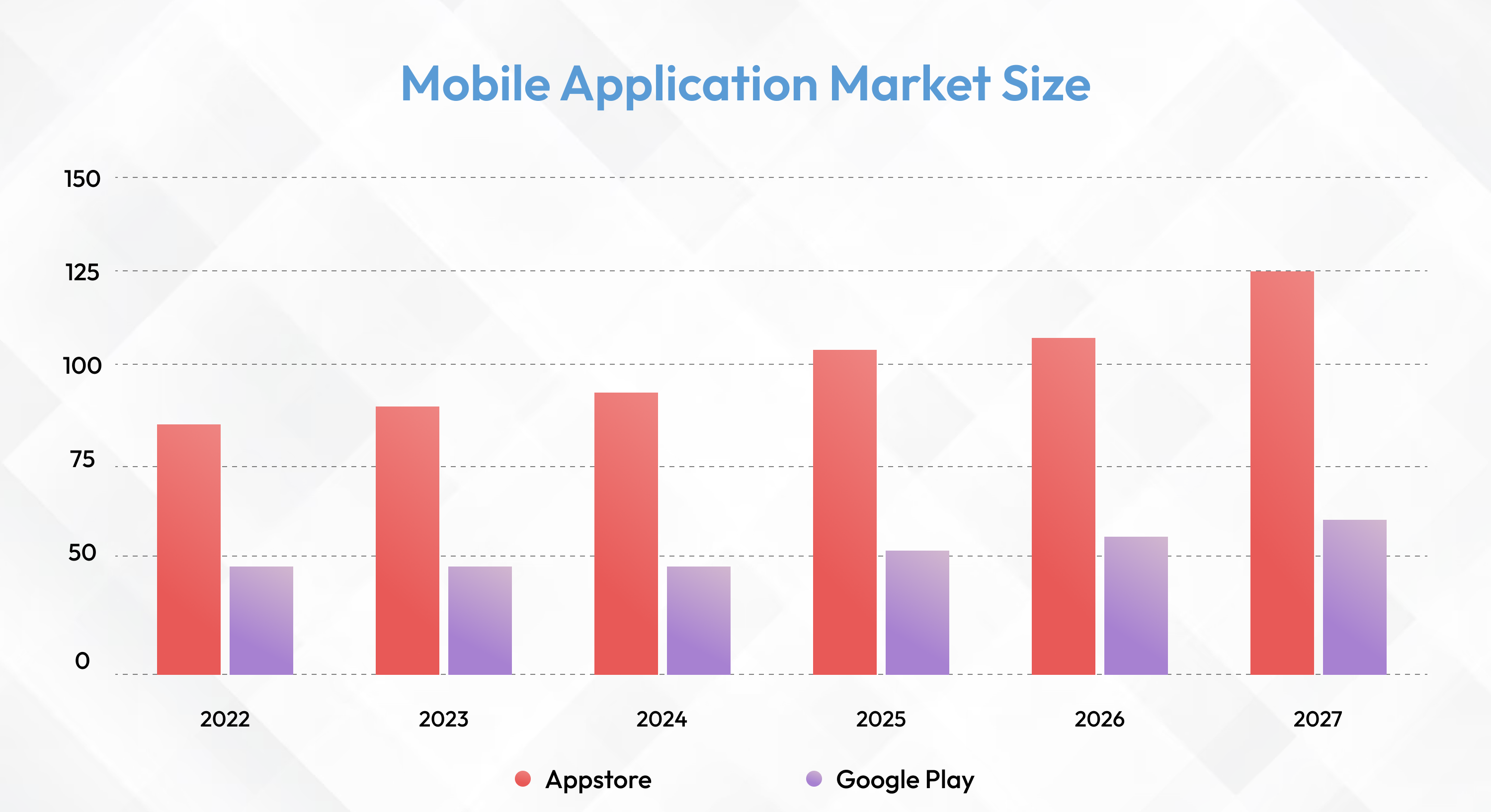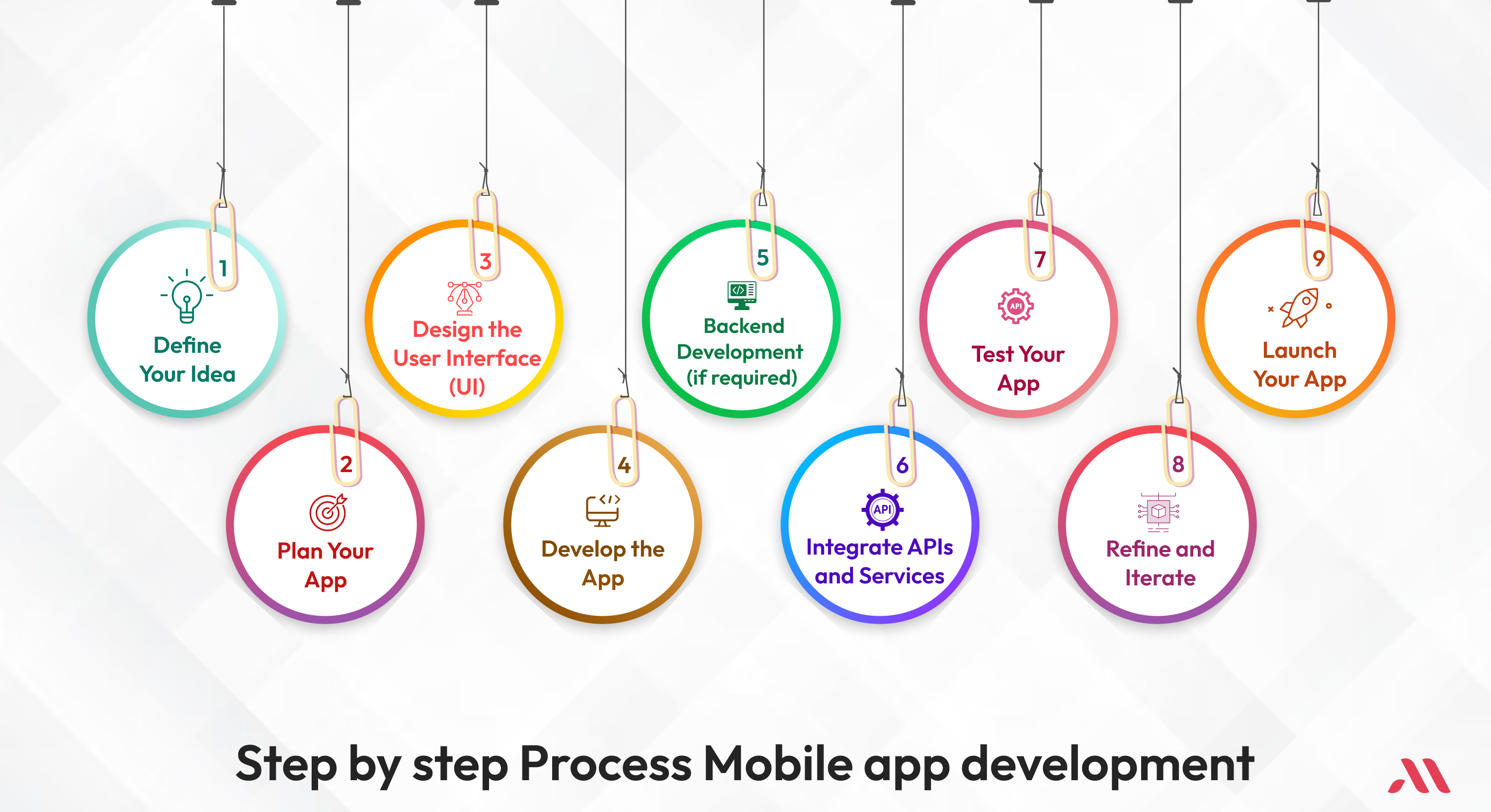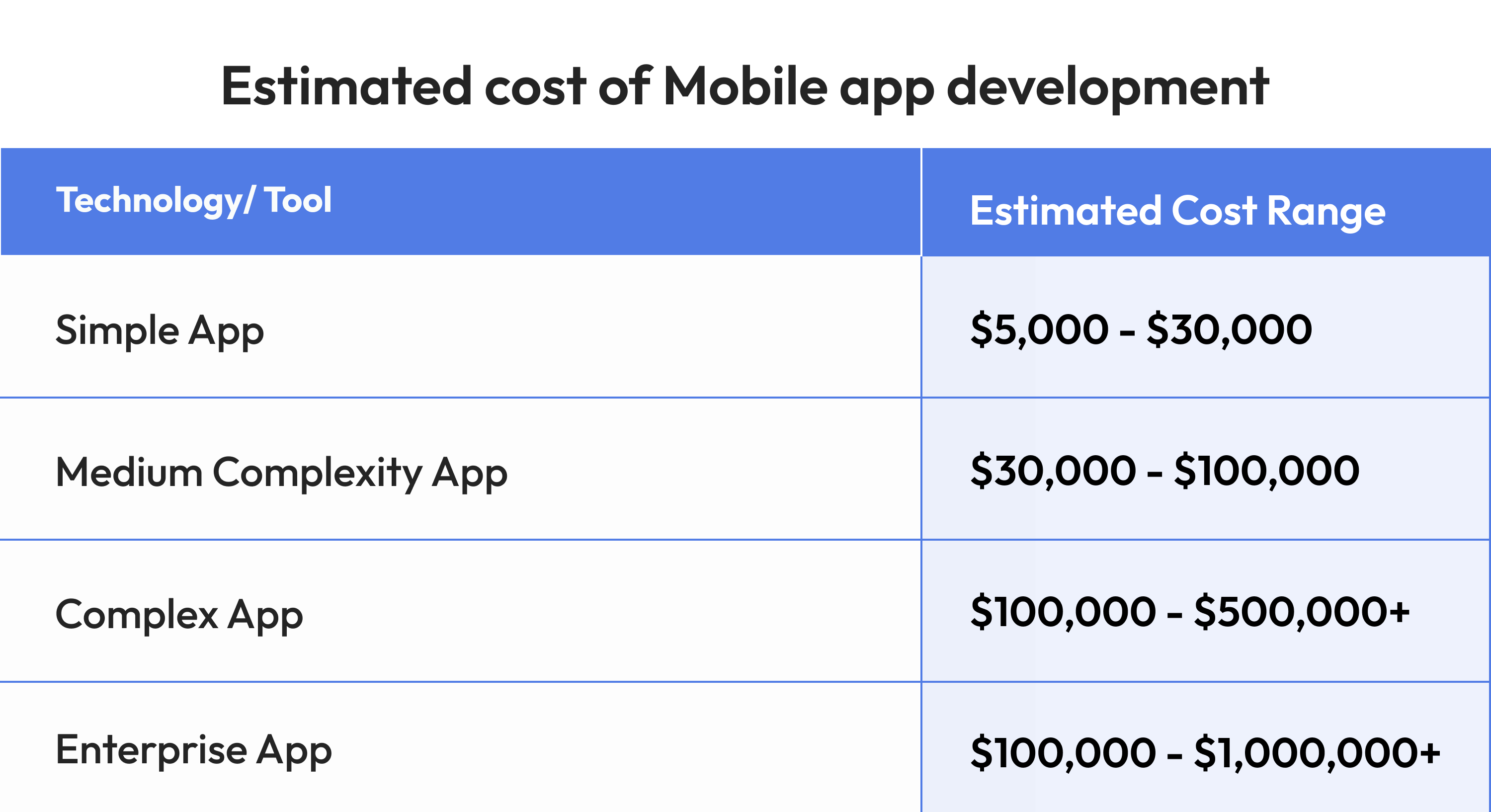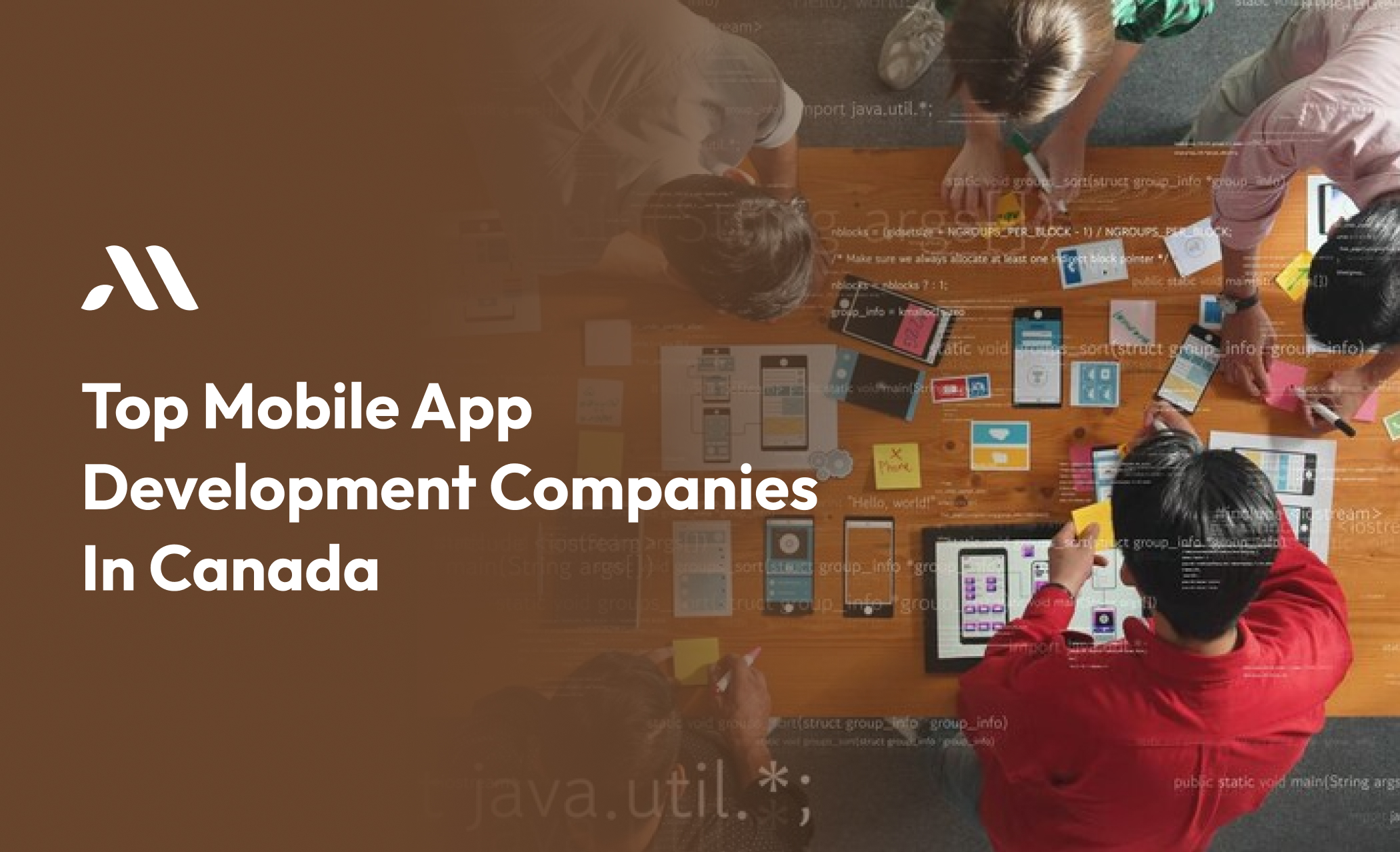Mobile apps have become an integral part of our daily lives, helping us navigate everything from communication to productivity with just a tap of our fingertips. But have you ever wondered how long it takes to bring these apps to life?
From the initial idea to the final product, the app development journey can vary greatly depending on several factors. We'll break down the process of mobile app development and explore the key factors that influence the time it takes to create an app.
Whether you're a budding entrepreneur with a brilliant app idea or a curious user interested in the behind-the-scenes of app creation, this article will shed light on the timeline of mobile app development in simple terms.
So, let's dive in and uncover the secrets behind the clockwork of app development!
Mobile Application Market Size
 According to Statista In 2027, consumer spending on mobile apps from the Apple App Store is projected to reach 125 billion U.S. dollars. Combined user spending in the App Store and Google Play is expected to approach 186 billion U.S. dollars by that year.
According to Statista In 2027, consumer spending on mobile apps from the Apple App Store is projected to reach 125 billion U.S. dollars. Combined user spending in the App Store and Google Play is expected to approach 186 billion U.S. dollars by that year.
This represents an increase of over 50 percent compared to the total consumer spending recorded in 2022 across the two major app platforms. However, the estimated app spending for the years 2023 and 2024 has significantly decreased from previous projections, reflecting a slowing growth trend in the digital market.
Why build a Mobile Application?
Reach
Mobile apps enable you to reach a large and diverse audience of smartphone and tablet users. With billions of mobile devices in use worldwide, having a mobile app can help you connect with users regardless of their location.
Convenience
Mobile apps provide a convenient way for users to access your services or content on the go. They can quickly launch the app from their device's home screen without needing to open a web browser and navigate to a website.
Enhanced User Experience
Mobile apps can offer a more tailored and immersive user experience compared to websites. They can leverage device features like GPS, camera, and sensors to provide personalized and interactive experiences.
Offline Access
Mobile apps can function offline or with limited connectivity, allowing users to access content or perform tasks even when they're not connected to the internet. This is especially useful for applications that require access to data or functionality in remote areas or areas with poor network coverage.
Push Notifications
Mobile apps can send push notifications to users, keeping them informed about updates, promotions, or important events. Push notifications can help increase user engagement and retention by reminding users to revisit the app.
Monetization Opportunities
Mobile apps offer various monetization opportunities, including in-app purchases, subscriptions, advertising, and premium features. Businesses can generate revenue directly from the app or use it as a platform to promote their products or services.
Brand Building
A well-designed and functional mobile app can enhance your brand's image and reputation. It provides a platform to showcase your brand's identity, values, and offerings, creating a positive impression among users.
Competitive Advantage
In many industries, having a mobile app has become essential for staying competitive. Offering a mobile app can differentiate your business from competitors and attract customers who prefer the convenience and accessibility of mobile apps.
Data Collection and Analytics
Mobile apps can collect valuable data about user behavior, preferences, and usage patterns. This data can be analyzed to gain insights into user needs and preferences, allowing businesses to make data-driven decisions and optimize their strategies.
Step-by-step process to mobile app development
 1. Define Your Idea
1. Define Your Idea
- Identify the purpose and target audience of your app.
- Conduct market research to understand user needs and competition.
- Define the core features and functionalities of your app.
2. Plan Your App
- Create a detailed project plan, including timelines and resources.
- Decide on the platforms (iOS, Android, or both) and technology stack (languages, frameworks) for development.
- Sketch wireframes or create mockups to visualize the app's UI/UX design.
3. Design the User Interface (UI)
- Design the app's UI elements, including screens, layouts, and navigation.
- Use design tools like Sketch, Adobe XD, or Figma to create high-fidelity designs.
- Ensure a user-friendly and intuitive design that aligns with platform guidelines (Material Design for Android, Human Interface Guidelines for iOS).
4. Develop the App
- Write code to implement the app's features and functionalities.
- Use programming languages (e.g., Swift, Kotlin) and development frameworks (e.g., React Native, Flutter) as per your chosen platform and technology stack.
- Follow coding best practices, maintain code readability, and ensure scalability.
5. Backend Development (if required)
- Develop a backend server to handle data storage, processing, and user authentication (if needed).
- Choose a backend technology (e.g., Node.js, Django) and database (e.g., MySQL, MongoDB) based on your app's requirements.
6. Integrate APIs and Services
- Integrate third-party APIs and services for features like authentication, push notifications, maps, payments, etc.
- Ensure proper authentication and authorization mechanisms to secure API access.
7. Test Your App
- Conduct thorough testing to identify and fix bugs, usability issues, and performance bottlenecks.
- Perform functional testing, UI testing, compatibility testing (across devices and OS versions), and performance testing.
- Use testing frameworks and tools like XCTest, Espresso, Appium, or TestFlight.
8. Refine and Iterate
- Gather feedback from beta testers or early users to identify areas for improvement.
- Iterate on the design and functionality based on user feedback and testing results.
- Continuously refine and optimize your app to enhance user experience and performance.
9. Prepare for Launch:
- Create app store accounts (e.g., Apple Developer Program, Google Play Console).
- Prepare app assets (app icon, screenshots, description) and metadata for app store listings.
- Set up app analytics and crash reporting tools to monitor app performance post-launch.
10. Launch Your App
- Submit your app to the respective app stores for review and approval.
- Promote your app through marketing channels like social media, press releases, and app store optimization (ASO).
- Monitor app performance and user feedback after launch, and address any issues promptly.
How to hire the best mobile app development company
Define Your Requirements
Clearly define your project requirements, including objectives, features, budget, and timeline.
Determine whether you need iOS, Android, or cross-platform development.
Consider factors like app complexity, scalability, and integration with other systems.
Research Potential Companies
Look for mobile app development companies online through search engines, directories, and social media platforms.
Ask for recommendations from colleagues, industry peers, or professional networks.
Review company portfolios, case studies, and client testimonials to assess their expertise and track record.
Evaluate Experience and Expertise
Assess the company's experience in mobile app development, particularly in your industry or niche.
Check if they have relevant expertise in technologies, frameworks, and tools required for your project.
Inquire about their team size, composition, and qualifications, including developers, designers, and project managers.
Check References and Reviews
Request references from past clients and contact them to gather feedback on their experience working with the company.
Look for online reviews and ratings on platforms like Clutch, Upwork, or Google My Business to gauge the company's reputation and reliability.
Evaluate Communication and Collaboration
Assess the company's communication skills and responsiveness during initial interactions.
Ensure they have a collaborative approach and are willing to involve you in the development process.
Clarify communication channels, project management tools, and reporting mechanisms they use.
Review Development Process and Methodology
Inquire about the company's development process, methodologies (e.g., Agile, Scrum), and project management practices.
Ensure they follow industry best practices, including code reviews, testing, and version control.
Discuss how they handle changes, updates, and feedback throughout the development lifecycle.
Evaluate Quality Assurance and Testing:
Ask about their quality assurance (QA) and testing processes to ensure the app meets quality standards.
Inquire about the types of testing they perform (e.g., functional testing, performance testing, security testing).
Verify if they use automated testing tools and have a dedicated QA team.
Discuss Pricing and Contracts
Request detailed proposals and cost estimates from shortlisted companies based on your project requirements.
Compare pricing models (e.g., fixed-price, time and materials, milestone-based) and contract terms.
Clarify payment schedules, milestones, and any additional costs (e.g., maintenance, support) involved.
Evaluate Support and Maintenance
Inquire about post-launch support, maintenance, and updates provided by the company.
Ensure they offer ongoing support services, bug fixes, and app updates as needed.
Discuss service level agreements (SLAs), response times, and escalation procedures for support requests.
Trust Your Instincts and Make a Decision
Trust your instincts and choose a company that you feel confident can deliver on your project requirements.
Consider factors like cultural fit, transparency, and rapport with the team when making your final decision.
Types of Mobile App Development
Native Apps
Native apps are developed for a specific mobile operating system, such as iOS or Android, using platform-specific languages and tools (Swift or Objective-C for iOS, Java or Kotlin for Android).
They offer high performance and full access to device features and APIs, providing a seamless user experience.
Examples include Apple's App Store and Google's Play Store.
Web Apps
Web apps are accessed through a web browser on a mobile device and do not require installation from an app store.
They are built using web technologies like HTML, CSS, and JavaScript and are responsive to different screen sizes.
Web apps offer cross-platform compatibility but may have limited access to device features compared to native apps.
Examples include mobile versions of websites like Twitter Lite or Instagram's mobile web app.
Hybrid Apps
Hybrid apps combine elements of both native and web apps, using web technologies wrapped within a native container.
They are developed using frameworks like React Native, Ionic, or Xamarin, allowing developers to write code once and deploy it across multiple platforms.
Hybrid apps offer cross-platform compatibility and access to device features through plugins or APIs.
Examples include Facebook, Instagram, and Airbnb.
Progressive Web Apps (PWAs):
PWAs are web applications that leverage modern web technologies to provide a native app-like experience.
They are designed to work offline, offer push notifications, and can be installed on a device's home screen.
PWAs use service workers and web app manifests to enhance performance, reliability, and discoverability.
Examples include Twitter, Pinterest, and Starbucks.
Cross-Platform Apps:
Cross-platform apps are developed using frameworks like Flutter, Xamarin, or Unity, allowing developers to write code once and deploy it across multiple platforms with minimal modifications.
They offer a balance between native performance and development efficiency, enabling faster time-to-market and lower development costs.
Examples include TikTok, Discord, and Microsoft Office.
Enterprise Apps:
Enterprise apps are developed for businesses and organizations to streamline internal processes, improve productivity, and facilitate communication and collaboration among employees.
They may include features like employee directories, task management, document sharing, and CRM integration.
Enterprise apps are often custom-built or tailored to specific business needs and may be distributed internally within an organization.
Gaming Apps:
Gaming apps are designed for entertainment purposes, offering various genres and gameplay experiences to users.
They range from casual games like puzzles and arcade games to immersive multiplayer and augmented reality (AR) games.
Gaming apps often require high-performance graphics and advanced programming techniques to deliver engaging experiences.
Examples include Candy Crush Saga, Fortnite, and Pokémon GO.
Estimated Cost of Mobile App Development
 Simple App:
Simple App:
- Basic functionality with minimal features
- Single platform (iOS or Android)
- Development time: 1-3 months
- Estimated cost: $5,000 - $30,000
Medium Complexity App:
- Moderate features and functionalities
- Single platform (iOS or Android)
- Development time: 3-6 months
- Estimated cost: $30,000 - $100,000
Complex App:
- Advanced features, integrations, and customizations
- Multiple platforms (iOS and Android)
- Development time: 6-12+ months
- Estimated cost: $100,000 - $500,000+
Enterprise App:
- Customized features for business use
- Integration with backend systems and enterprise databases
- Enhanced security and compliance requirements
- Development time: 6-12+ months
- Estimated cost: $100,000 - $1,000,000+
Additional factors that can influence the cost of app development include:
Design Complexity: Custom UI/UX design, animations, and graphics can increase development costs.
Third-Party Integrations: Integrating with external APIs, services, or hardware devices may require additional development effort and cost.
Backend Development: Building a backend server infrastructure for data storage, processing, and user authentication adds to the overall project cost.
Quality Assurance and Testing: Thorough testing and QA processes ensure app reliability and performance but add to the development timeline and cost.
Post-Launch Support and Maintenance: Ongoing support, updates, and maintenance after the app's launch incur additional expenses.
How MicraSol Is your idle partner in the journey of Mobile App Development
MicraSol is your ideal partner in mobile app development due to its comprehensive approach, combining expertise, flexibility, and a client-centric focus. With a skilled team proficient in iOS, Android, and cross-platform frameworks, MicraSol offers end-to-end services from concept to post-launch support.
Their Agile methodology ensures flexibility and transparency, while rigorous QA processes guarantee a high-quality product. MicraSol provides tailored, scalable solutions at competitive prices, with ongoing support and a commitment to continuous improvement and innovation.
Their client-centric approach ensures clear communication and a collaborative partnership, making them a reliable choice for successful mobile app development.
FAQ
1) What are the essential steps involved in mobile app development?
Mobile app development involves several key steps: starting with idea and conceptualization where the app's purpose and features are defined, followed by planning and research to understand the market and decide on the technology stack.
2) How long does it typically take for mobile app development?
The development timeline for a mobile app varies based on complexity. Simple apps typically take 1-3 months to develop, medium complexity apps take about 3-6 months, and complex apps can take 6-12 months or more. Factors like the number of features, design complexity, and the platforms being targeted (iOS, Android, or both) significantly influence the development duration.
3) What factors influence the cost of mobile app development?
The cost of developing a mobile app is influenced by its complexity, the number of platforms (iOS, Android, or both), and design requirements. Custom UI/UX designs and animations, third-party integrations, and robust backend infrastructure add to the cost. Comprehensive testing and quality assurance, as well as ongoing maintenance and updates post-launch, also contribute to the overall expense.
4) What is the difference between native, hybrid, and web apps?
Native apps are built specifically for one platform (iOS or Android) using platform-specific languages, offering optimal performance and full access to device features. Hybrid apps combine native and web elements, using web technologies wrapped in a native container, allowing cross-platform deployment but with potential performance trade-offs.
5) How can I choose the best mobile app development company for my project?
To choose the best mobile app development company, start by defining your project requirements clearly, including features, budget, and timeline. Research potential companies with relevant industry experience and assess their expertise and past projects. Check references and reviews for reliability and quality.








